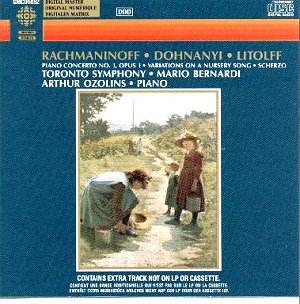 Composer: Ferruccio Busoni
Composer: Ferruccio Busoni
Works: Piano Music, Vol. 2: J. S. Bach (transcribed Busoni): Chaconne for solo violin, B24; Etude en forme de variations, op. 17; Variations on “Kommt ein Vogel geflogen”, K222; Theme and Variations in C, K. 6; Inno Variations, K16; Variations and Fugue on Chopin’s Prelude in C minor, op. 22, K. 213
Performers: Wolf Harden (pianoforte)
Recording: 21-22.12.2000, St. Martin’s Church, East Woodhay, Hampshire (UK)
Label: NAXOS
Busoni’s oeuvre occupies a unique and often elusive space within the late-Romantic and early-20th-century musical landscape. His multifaceted identity, straddling Italian and German influences, complicates the reception of his music, which often seems destined to remain in the shadows of more canonized figures. This second volume of his piano music features works that span his career, including his early variations and his celebrated transcription of Bach’s Chaconne. In this recording, pianist Wolf Harden navigates the intricate terrain of Busoni’s musical language, offering insights into both the composer’s stylistic evolution and the interpretive challenges inherent in these works.
The program opens with the Chaconne, a masterful transcription that reimagines Bach’s original for the piano. Here, Harden begins with a somewhat measured approach, perhaps to honor the integrity of Bach’s voice before allowing Busoni’s characteristic romanticism to surface. Early on, the texture feels a touch heavy, potentially influenced by the choice of instrument or the acoustics of St. Martin’s Church. However, as the performance unfolds, Harden’s engagement with Busoni’s lush harmonies emerges vividly. The interpretative arc reveals a deepening emotional resonance, particularly in the latter sections where Busoni’s inventive flourishes evoke a rich tapestry of sound that at times flirts with impressionistic colors, suggesting a kinship with Debussy, albeit a tenuous one given the timeline of their respective careers.
The Etude en forme de variations, while initially unremarkable, blossoms under Harden’s fingers. This nine-minute work reveals layers of complexity and unexpected harmonic shifts that challenge conventional expectations. Harden’s interpretation grows increasingly confident, illuminating poetic depths that speak to Busoni’s nuanced understanding of counterpoint and texture, reminiscent of a hazy Brahms. The Variations on “Kommt ein Vogel geflogen” display a lighter, more playful side of Busoni, although the humor did not fully translate in this interpretation. Harden’s later variations in this set, however, caught my ear, showcasing an inventive spirit that reflects Busoni’s early genius.
The disc also features the early C major Variations and the Inno Variations, both of which reveal a youthful command of the piano but remain relatively simplistic in thematic material. This simplicity, however, should not overshadow the technical prowess displayed by a young Busoni, which Harden captures with both precision and flair. The Variations and Fugue on Chopin’s Prelude in C minor is perhaps the most ambitious undertaking here, a pianistic tour de force that requires not only technical command but also interpretive depth. Harden’s performance is commendable, though it lacks the profound engagement needed to elevate it into the standard repertoire. Moments of inspiration do surface, particularly when the piece transcends its Chopin origin, yet at times one feels the burden of gratuitous elaboration.
The engineering of this recording merits attention, as it captures a sound quality that is both rich and nuanced without overwhelming the listener. The acoustic environment of St. Martin’s Church contributes to a generous sonority that enhances the overall experience. While some might critique the bass-heavy initial impression, it dissipates as the program progresses, revealing a balanced soundscape that respects both the piano’s capabilities and the subtleties of Busoni’s textures.
This recording of Busoni’s piano music, while not groundbreaking in its selection, offers a thoughtful exploration of a composer whose work is often overlooked. Harden’s performances, particularly in the later variations and the Chaconne, invite listeners to engage with Busoni’s expansive musical vision. The recording stands as a testament to the importance of revisiting Busoni’s contributions, even if the pieces presented here may not secure him a permanent place in the canon. Those interested in the evolution of piano music in the late 19th and early 20th centuries will find this disc a worthy addition, encouraging further exploration of a composer who continues to provoke thought and admiration in equal measure.



